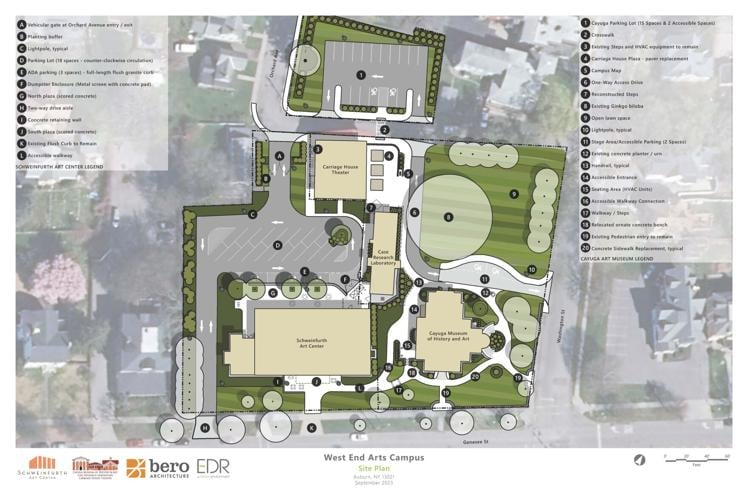The Cayuga Museum of History & Art is now 87 years old, having been formally founded in October 1936. Both the museum and its mansion home have unique and complex stories to tell. Several well-known Auburn families such as the Seymours, Willards and Cases had a part in building and maintaining the 19th century Greek Revival mansion, which now serves to educate visitors about Cayuga County history. Today, people often stumble upon the museum, enticed by the ornate edifice. Many of these individuals ask the same question: What was this building? Surprisingly, there are more than a few answers to this question.
The original function of the Willard-Case mansion was that of a grand home. Sylvester Willard and his wife, Jane Frances Case, moved to Auburn in 1843 and chose 203 Genesee St. as their family dwelling. It was here that Dr. Willard practiced medicine and the couple raised their two daughters, Georgiana and Caroline. The family prospered in the mid-late 19th century primarily thanks to Dr. Willard's ties to the Oswego Starch Factory, which dominated the starch industry for a time. Upon the deaths of Dr. and Mrs. Willard, their daughters inherited a fortune and the mansion property.
People are also reading…
The next family to make the mansion their home was the Cases, related to the Willards by marriage. Much like their relatives, the Case family found much of their wealth through their connections to the Oswego Starch Factory. Theodore Pettibone Case was one of Auburn鈥檚 top earners during the late 19th century thanks to his investments in the factory. Theodore W. Case, his grandson, inherited the mansion in 1916 and began important work in a laboratory on the property. It was in this building that Ted worked with other scientists, men and women alike, to create world-changing inventions.
After 20 years of residency at 203 Genesee St., Case and his family moved to a new and grander home. Around the same time, Ted was introduced to a group looking for a building to house a museum. Not long after their initial meeting, Ted agreed to sell the Willard-Case mansion to the group and, sticking true to his charitable nature, only asked for the surprising sum of $1. Once the agreements were made and the deed was signed, the museum opened its doors and has been educating the public about Cayuga County, art, history and much more ever since.
Since 1936, many projects have been completed to enhance the museum's facilities, exhibits and ability to serve the Auburn community. In 1994, after many years of use as a community art space, the museum made tremendous efforts to open the Case Research Laboratory building as a space dedicated to the life of Ted Case and his work. Many countless hours of research helped guide the museum in the opening of the lab for visitors to hear the history and see the original equipment utilized by Ted and his staff. In 2022, the museum was awarded a grant to delve even further into the story of the lab and revitalize the guided tour, a project that was completed in the summer of 2023.
Another project that has continued to benefit the museum and the community since its completion is the renovation of the Carriage House Theater. In the 2010s the mansion鈥檚 carriage house, built in the 1850s, became a modern theater venue equipped with a projection system, sound equipment, a performance stage and much more. Today, this space is used not only by the Cayuga Museum but by businesses, other museums and individuals to host events.
What鈥檚 next for the museum? In 2024 we are breaking ground on a large-scale project to revitalize our grounds through the creation of the West End Arts Campus, which is a collaborative project with the Schweinfurth Art Center. The main goals of this project are to increase accessibility through upgraded infrastructure, expand our green space through extensive landscaping, and connect our grounds with our neighbors at the Schweinfurth to increase traffic between the two locations. Through this work, we will be better equipped to serve our mission and community.
In our 87th year of operation, we continue to be grateful for and committed to our community!
A multimillion-dollar project to merge two Auburn cultural institutions into one campus took a step forward on Tuesday.聽













